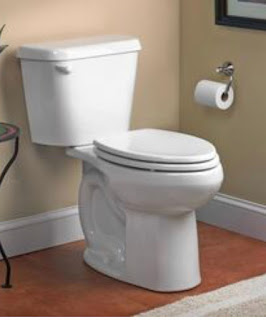STANDARDIZATION...how helpful is it, really?
The hubs and I recently took part of a trade show
sponsored by an organization called WasteCaps Nebraska. Their goal is to encourage recycling and any
other measure that might aid in helping our environment. Though many think pumping septic tanks is quite
dirty, we are actually recycling wastewater.
After we haul the septic contents away, it is then treated and released
back into a river –by this time it is safe and good for the environment. Really
when you think about it, septic systems were among the first recycling systems
ever invented – our first attempt at reusing water.
While at the show, we enjoyed hearing the keynote
speaker, Mitch Hedlund, who is the founder of Recycle Across America. She presented recycling in a way I had never
considered before and stressed the importance of standardizing our recycling
methods. Let me explain. If you consider the different places we put
items to be recycled, what do they look like?
Are they the same? I would venture
to say no. Here’s another question to
consider: You are at an event, say a county fair, and you want to
throw your trash away, have you ever been confused between the trash can and
the recycle can? When you look inside do
the contents look the same? Why is that? According to Mitch Hedlund it is because we
don’t have a standardized system for our recycling.
Check out these pictures of recycle bins – some
are very clear, some not so much. Think
if the clear ones were standardized!
I’m not much of a recycler. I know, my carbon footprint is large. I recycle cans but that’s about it. Though I see the need to take care of our
planet, I also see how most recycled products tend to be more expensive to use
and many times aren’t as high quality as their non-recycled counter parts. With this information in mind, why even bother
to recycle? I mean, what’s the point?
After listening to Ms. Hedlund, I think she does
have a point with standardizing our recycling cans. You see, one of the reasons recycling costs
so much is that it takes a lot of time and money to sort the recycled products
and since there is no one system for recycling, people like you and me are
constantly confused when we go to throw items away. It’s not clearly marked and when you look
inside the contents of the “recycled” products don’t seem to be that different
from the trash. By the time our horribly
cluttered recycle bins get to the recycling plants they have so much unusable
junk in them that getting things sorted to be usable is a long, laborious
job. Her theory is that if there is a
standardized system recycling would become fool proof. Therefore, our recycling centers would be
efficient, our recycled products would be pure, and in the end, our recycled products would
be cost effective. Win-win-win.
Hmm…something to think about, right?
But, has creating standardized measures helped us
before? Are we sure this will work? Consider these examples:
EXAMPLE #1: Standardizing knobs on medical
equipment
In the 1960s and 1970s the mortality rate of
people undergoing surgery was quite high.
Though procedures were not extensive or even life-threatening, many people
would not survive due to the machines dosing the anesthesia. One doctor suggested this was because some of
the knobs had to be turned right for an increase in one type of medicine and
others knobs on the very same machine were turned left for an increase in
another type of medicine. This was
difficult for doctors to keep straight and conduct surgery. After implementing the idea that all knobs
should be turned in the same direction for an increase in dosage, survival
rates increased 600%. Standardizing
medical equipment saved lives.
EXAMPLE #2: Time zones
Do you know that even in the late 1800s we didn’t
have standardized time zones? Time was
decided by EACH INDIVIDUAL TOWN based on their sundials. Therefore, if you were to travel from town to
town, even if they weren’t far apart, time could be off by many minutes. Now consider running the railroad in this type of
environment. Trains were expected to
arrive and leave at specific times, but when every town had their own time zone
(so to speak…) it was impossible for the railroad to ever reach destinations in
a timely manner. However, once a
standardized time zone was introduced, this was no longer a problem.
EXAMPLE #3: Stop signs (and signs in general)
For many years, there was a variety of stop
signs. Some read stop, some had a hand
held up, some were square, some were round, etc. Finally, one man suggested that all stop
signs everywhere should be identical! Same
color, same shape, same everything. The
stop sign became the first universal sign that is recognized the world over. Because the stop sign standardization worked
so well, this idea carried over into other signs that we still use and
recognize today.
So, with all this in mind, can you see Ms.
Hedlund’s point? I do. I think she is really on to something. Think about all the other areas in our life
where the standardization of something creates order and helps us be more
efficient in our world. There are
countless examples.
This campaign really rang true for me, and I hope
it will with you too. I don’t consider
myself a tree hugger, but I do think it is our responsibility to take care of
what God blessed us with. If
standardizing measures in recycling can help clean up our world and create
recycled products that are more affordable for us to use, then shouldn’t we do
it?
For more information about Mitch Hedlund and
Recycle Across Amercia, visit their website at www.recycleacrossamerica.org








Comments
Post a Comment